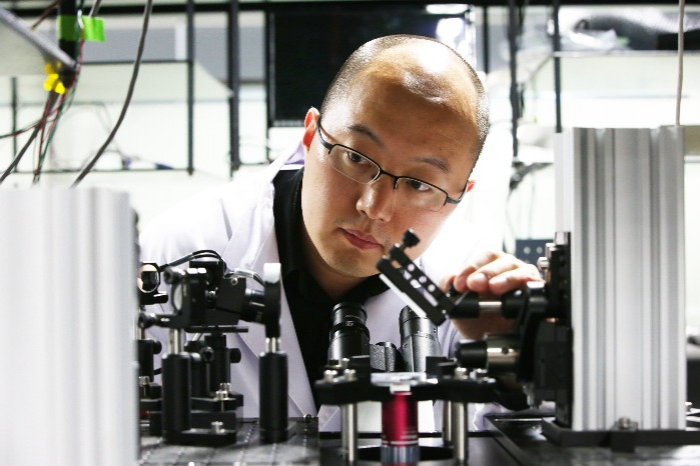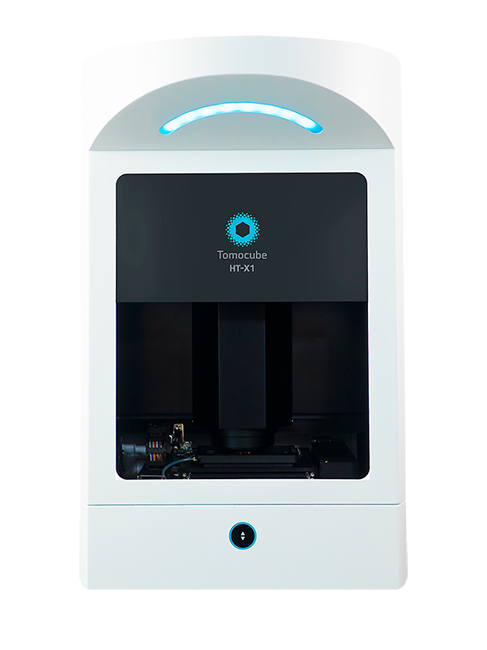Research & Development
Korean scientists publish breakthrough in high-resolution X-ray imaging
The latest findings are expected to pave the way for the development of X-ray microscopes with nanometer resolution
By Apr 13, 2023 (Gmt+09:00)
2
Min read
Most Read
LG Chem to sell water filter business to Glenwood PE for $692 million


KT&G eyes overseas M&A after rejecting activist fund's offer


Kyobo Life poised to buy Japan’s SBI Group-owned savings bank


StockX in merger talks with Naver’s online reseller Kream


Meritz backs half of ex-manager’s $210 mn hedge fund



South Korean scientists led by physicist Park Yongkeun with global achievements in medical science and engineering have discovered a new X-ray imaging technology with nanometer resolution, a leap forward in X-ray microscope lens technology.
They have found a high-resolution X-ray imaging technology with mathematical methods, using a numerical lens, not a physical lens, according to the article “Direct High-resolution X-ray imaging exploiting pseudorandomness” released last Thursday in Light: Science & Applications, a peer-reviewed open-access scientific journal published by Nature Portfolio.
The authors who took part in the experiment were Lee KyeoReh of the Department of Physics of the Korea Advanced Institute of Science and Technology (KAIST) and KAIST Institute for Health Science and Technology, as well as Lim Jun and Lee Su Yong at the Pohang Accelerator Laboratory of Pohang University of Science and Technology under the supervision of Chief Professor Park of KAIST’s Physics Department.
The latest findings were unveiled seven years after Park and Lee KyeoReh published a research paper on a related technology in 2016, which became the foundation for the latest study.
The new technology is considered a breakthrough in X-ray imaging resolution enhancement.
Successful follow-up studies of the technology could achieve a 1-nanometer resolution of X-ray imaging, a resolution equivalent to that of expensive electron microscopes.
CHALLENGES TO X-RAY IMAGING LENS MAKING
Since its discovery, X-ray imaging has been an irreplaceable tool thanks to its unique penetrating power and high-resolution capability.
But its penetrating power has also made it difficult to build the optical structure of an X-ray microscope because X-rays pass through everything.
Thus, X-ray microscopes use zone plates, instead of refractive lenses, but it is challenging to produce zone plates with high-quality nanostructures that determine the resolution of an image from the X-ray microscope using the plate. Zone plates are also very fragile.
As an alternative solution, the Korean scientists instead investigated a new X-ray nano-microscopy technology that generates random diffraction patterns by diffracting incident X-rays.
During their experiment, the researchers applied a numerical instead of physical lens by measuring the sample diffraction field, and mathematically identified that the high-resolution information of the sample was fully contained in these random diffraction patterns.
The research team believes its investigation can lead to the development of nanometer-resolution X-ray imaging lenses.

The company has supplied HT to Harvard University and Massachusetts Institute of Technology.
Park is also co-founder of The.Wave.Talk, which has developed technology to analyze the quality of water to detect water pollution levels, using a laser. This technology has garnered interest from circles concerned about health and safety issues surrounding old water pipes in Europe.
Write to Hae-Sung Lee at ihs@hankyung.com
Sookyung Seo edited this article.
More to Read
-
 HealthcareIsrael’s Nanox begins production of digital X-ray components in Korea
HealthcareIsrael’s Nanox begins production of digital X-ray components in KoreaJun 22, 2021 (Gmt+09:00)
2 Min read
Comment 0
LOG IN


